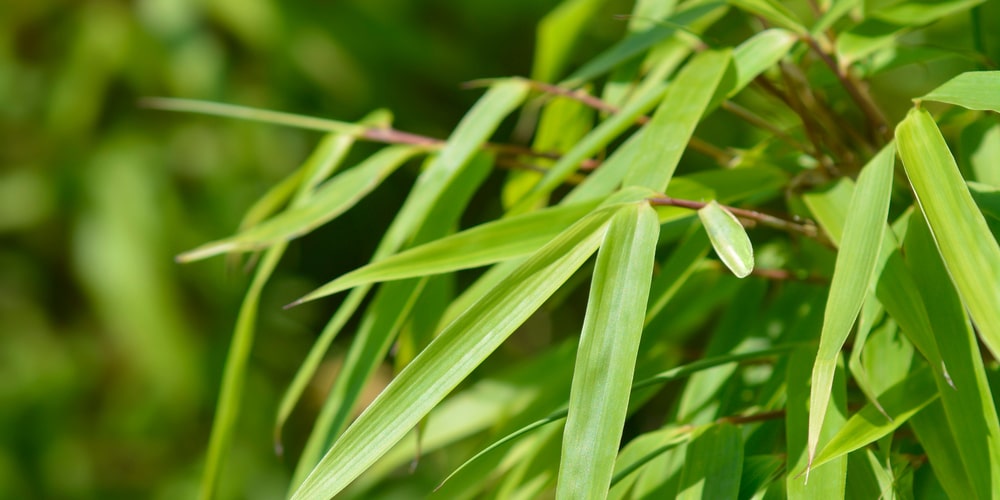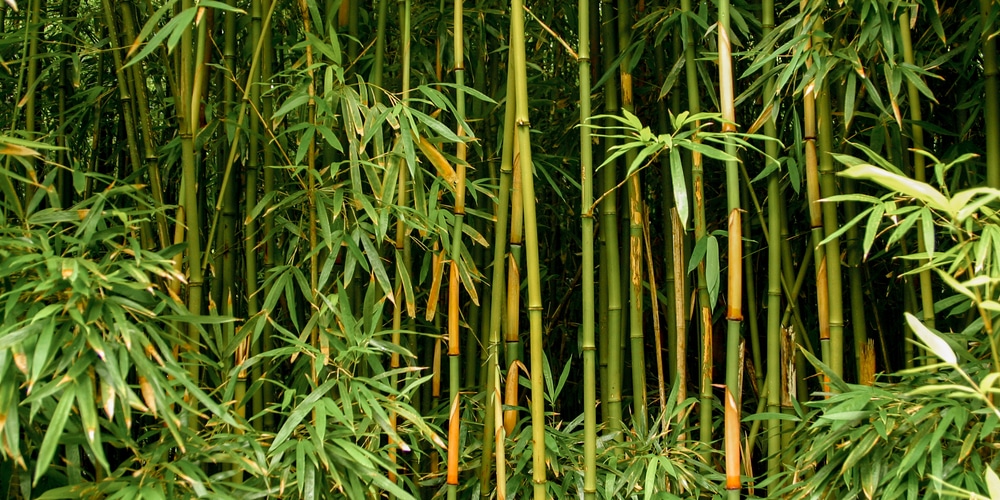Bamboo has long been popular in Asia for its graceful appearance and rapid growth. With its long, slender leaves and tall, spindly stems, bamboo makes an attractive addition to any garden and is often used to create screens or hedges. Native to eastern Asia, it has been naturalized in many parts of the world. Bamboo grass is a common sight in parks and gardens, and it is also used in construction and furniture making.
To address the question of whether bamboo is grass or tree, we need to take a closer look at the plant. Bamboo is actually a type of grass, but it shares many characteristics with trees.
Scientifically speaking, bamboo is classified as a member of the grass family, Poaceae. This family also includes cereal crops such as wheat, rice, and corn.
However, bamboo more closely resembles a tree in terms of its physical appearance and growth habits. It has a woody stem that can grow to over 100 feet tall.
And like trees, bamboo grasses have an extensive root system. Bamboo is an evergreen plant, which means it keeps its leaves all year round. In the winter, when other plants are dormant, bamboo continues to grow.
Physical and Growth Characteristics of Bamboo Grass
Bamboo is known for its unique physical characteristics, including its hard, slender, and woody stems. The leaves have a fine-toothed margin and a glossy surface, and they are arranged in pairs along the stem. The flowers of bamboo plants are small and inconspicuous. They are borne on short spikes that grow from the leaf axils.
While scientifically classified as grass, you can see that bamboo shares many characteristics with trees. Let’s take a closer look at its physical attributes to help us understand why.
Bamboos Grow Aggressively
The physical and growth characteristics of bamboo grass are truly remarkable. Like most grasses, bamboo is fast-growing, reaching heights up to 100 feet upon maturity. In addition to its impressive size, bamboo is notable for its thick, strong stalks and aggressive root system.
These characteristics allow it to propagate quickly and take hold firmly in even the most challenging environments. Indeed, the sprawling nature of bamboo can make it difficult to control, but many people value this tenacious plant both for its own sake and for the shade it provides to other species. Overall, bamboo’s impressive growth and physical characteristics make it an intriguing plant that stands out from all others in the landscape.
They Have a Hard Woody Stem
The hard, woody stem is one of the most distinctive features of bamboo. This gives the plant extra strength and stability, allowing it to grow tall and straight without toppling over. The stem is also hollow in the center, making it lightweight and easy to transport. In fact, bamboo grass is often used in construction due to its high strength-to-weight ratio.
Bamboos Physically Adapt to Their Environment
Bamboo is an amazing plant with many adaptations that help it thrive in a variety of environments. For example, bamboos can grow faster so they can get more sunlight. This is an adaptation to help the plant survive in dense forests. The bamboo leaves are also adapted to withstand strong winds and heavy rains.
Additionally, bamboos are very efficient at photosynthesis, which means they can produce more oxygen than other plants. This is a valuable adaptation, as it helps to improve air quality in the environment.
Bamboo is an Incredibly Versatile Plant
The physical and growth characteristics of bamboo make it an incredibly versatile plant. It can be used for various purposes, including construction, furniture making, and paper production. Additionally, bamboo is a popular choice for landscaping due to its attractive appearance and easy-care requirements.
Bamboo is a Grass, But it Resembles a Tree
At first glance, bamboo might seem like just another type of tree. With its tall, sturdy stalks and wide, expansive branches, it looks like a mini version of an oak or pine. However, while bamboo may resemble a small tree at first glance, it is actually classified as a large variation of grass.
This unusual grass species is found all over the world and is prized for its thick, strong stalks that can be used to make everything from houses to musical instruments.
Not only does bamboo have a rich history and diverse range of applications, but it also provides many important benefits to the environment.
For instance, because of its incredible height and rapid growth cycle, it is incredibly good at absorbing carbon dioxide from the air and releasing oxygen back into the atmosphere.
Thanks to these unique properties and countless other reasons, bamboo truly deserves its designation as one of the world’s most amazing grasses.
Final Thoughts
Perhaps the one thing that best defines bamboo grass is its versatility. Whether in a garden, as landscaping material, or used for construction purposes, it can take on many different forms and fulfill a wide range of purposes.
Its robust growth patterns and durable structure set it apart from other types of grass, making it an incredibly valuable plant for both commercial and personal use. So if you’re looking for something that’s both beautiful and practical, there’s really a no better choice than bamboo grass.
Just be careful though – they’re aggressive growers! It takes up space and being prepared for its growth is the key to keeping it under control.
Related Article: Can Bamboo Grow in New England?


